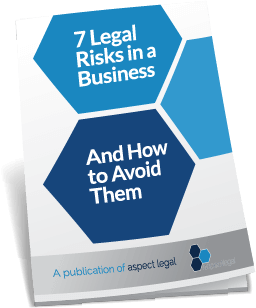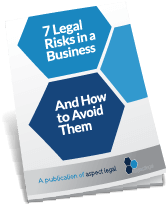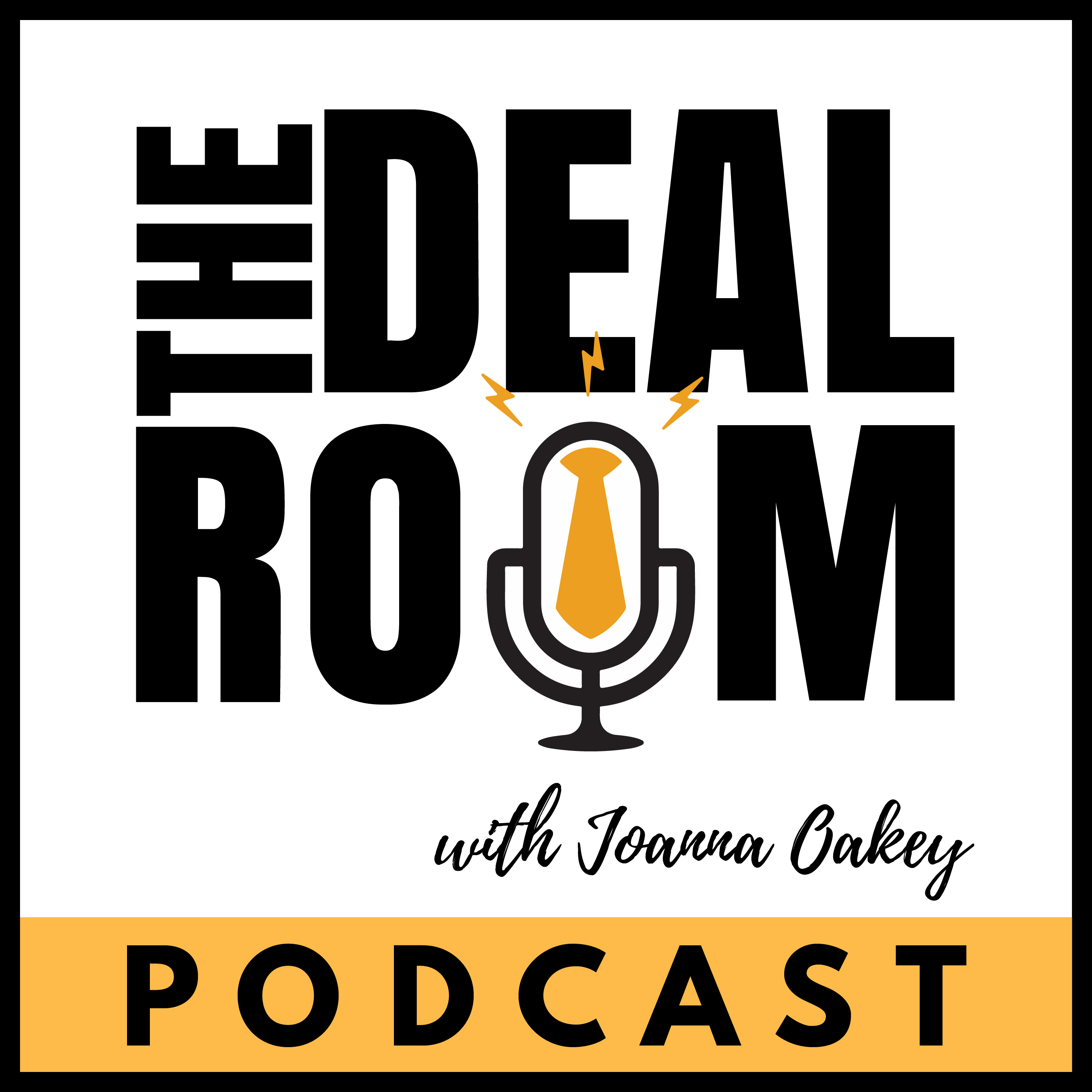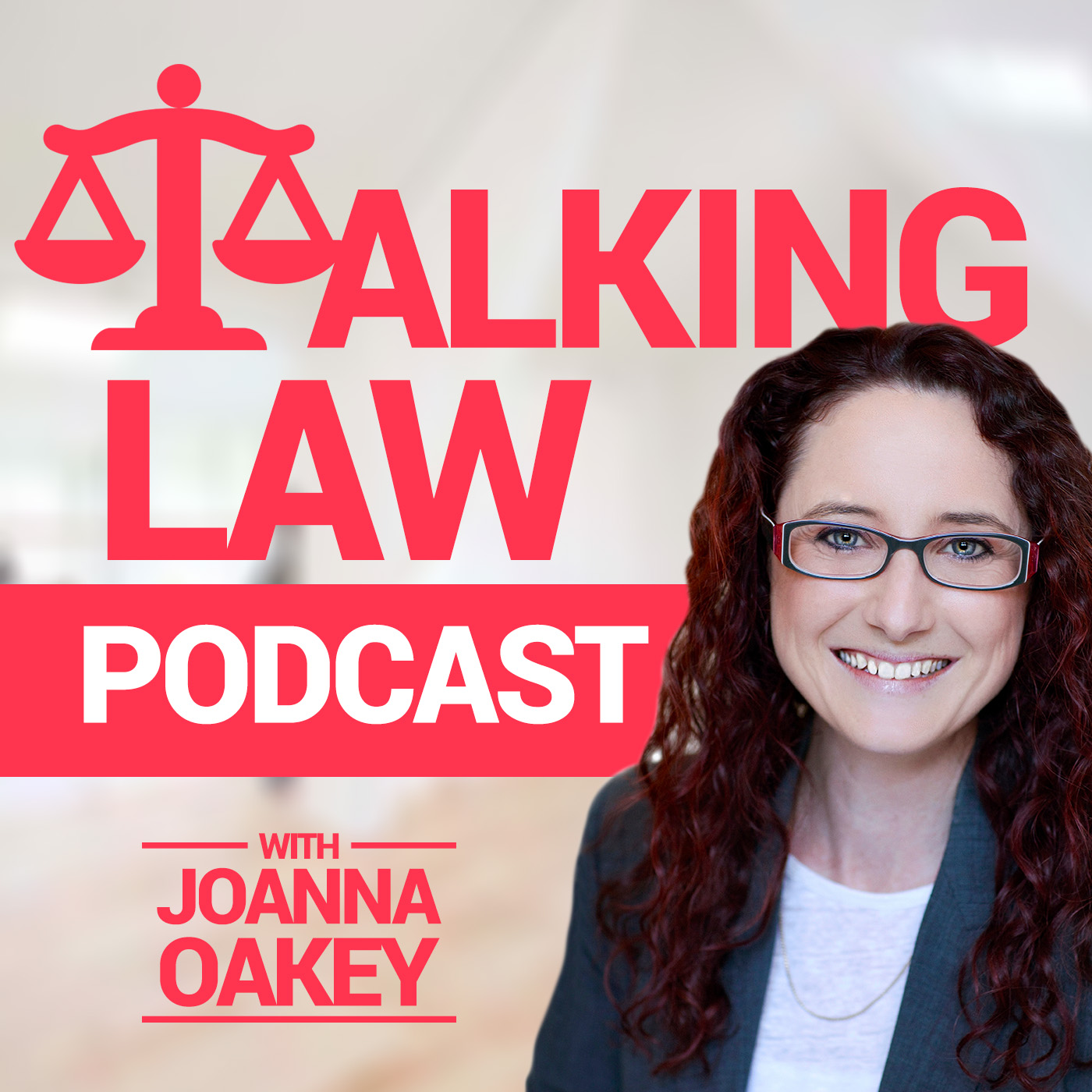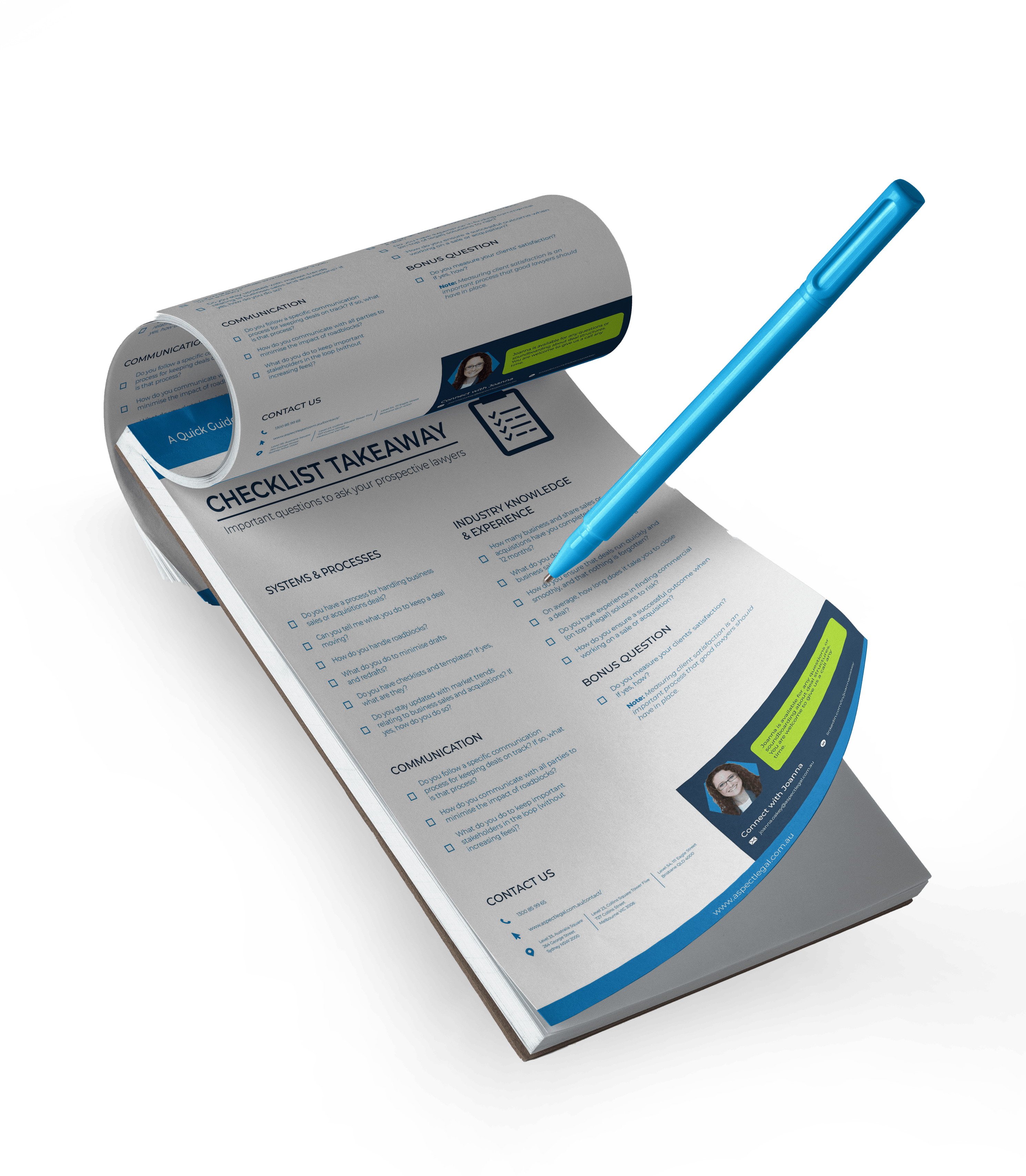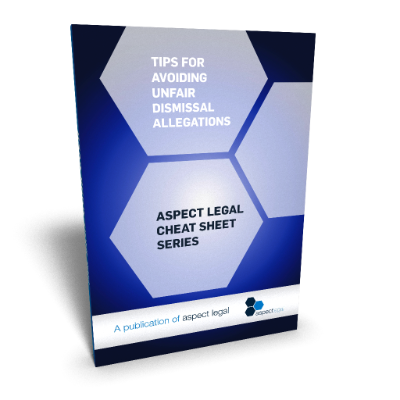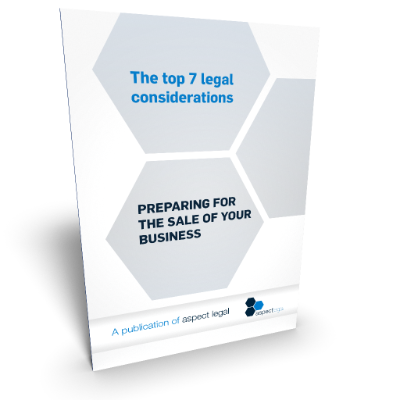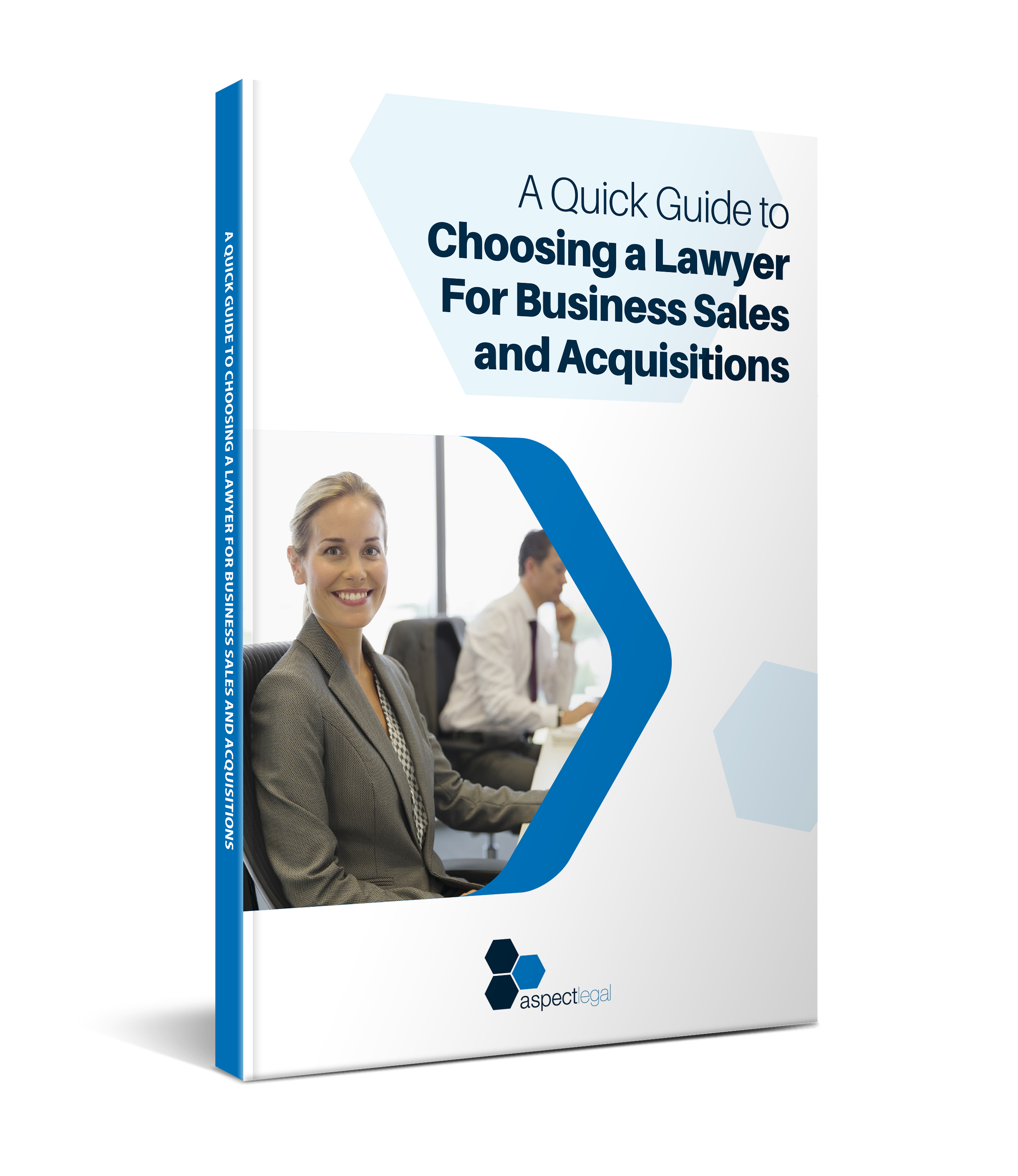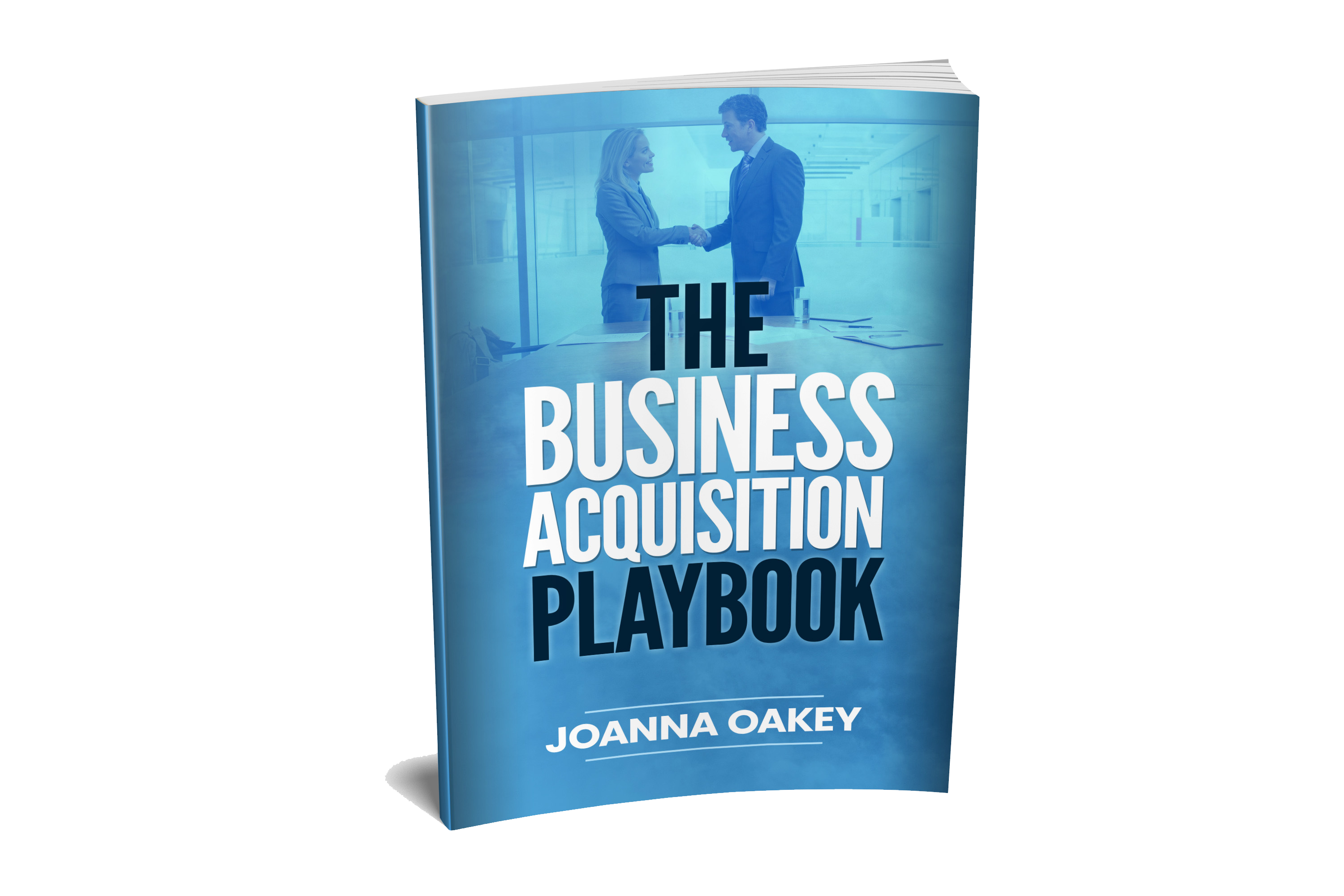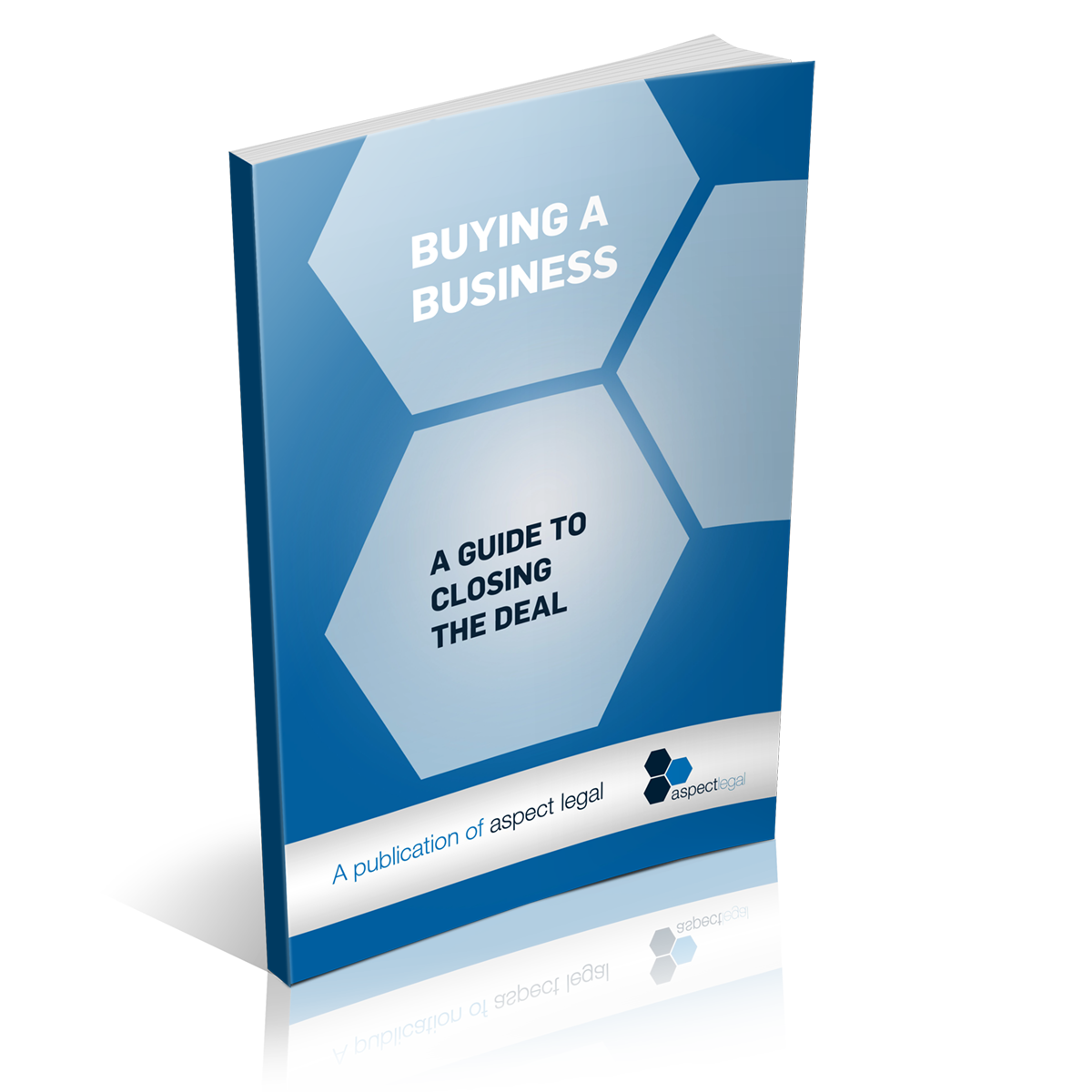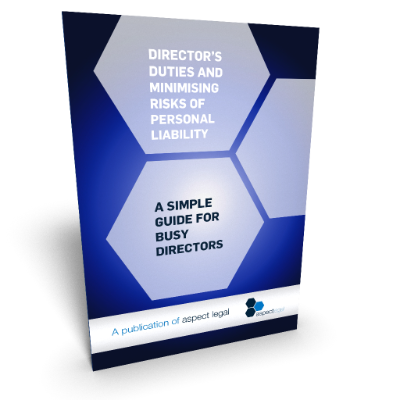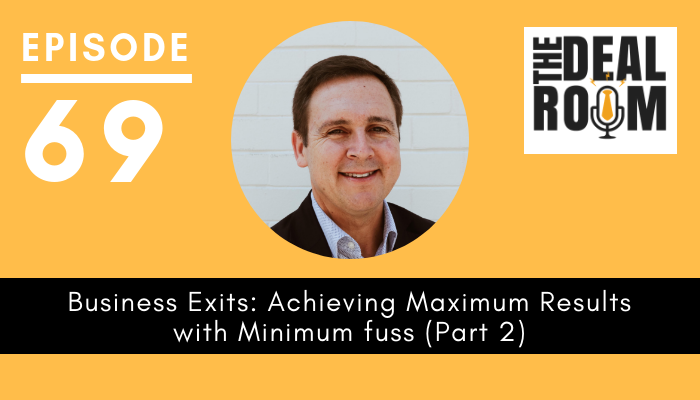
Welcome to the second half of our two-part series with business exit advisor Koos Kruger. In this episode, we will drill into a number of moving factors that need to be considered when using this approach. Then we’ll wrap up with practical tips for accountants, brokers and business advisors working within this space.

Episode Highlights
- A case example where it has been successful
- Moving factors to consider in this approach
- Remuneration model within the M&A space
- Stick to your purpose and build everything else around that
- Tips for business brokers and M&A advisors
- Tips for accountants
- Get in touch with Koos
Joanna: Hi, it’s Joanna Oakey here and welcome back to The Deal Room podcast brought to you by our commercial legal practice, Aspect Legal. Welcome to the second half of our 2-part series with Koos Kruger of Business Companion!
In part one, which was last week’s episode, Koos introduced an interesting proposition to business exit planning where a business owner progressively steps out of the business by installing a general manager or CEO during the transition process within a 5-year window.
Today, in part two, we will drill into a number of moving factors that need to be considered when using this approach. Then we’ll wrap up the series with practical tips for accountants, brokers and business advisors working within this space.
So stay tuned and we’ll get started!
Joanna: As you’ve seen this play out in the past, have you seen any examples where problems have occurred along the way?
Koos: We’ve had situations where a general manager was brought on board and six months down the track realize that this person is not shaping up with what we originally thought it was going to be. So yes, you then have to make those corrective actions and go back into the market and find the right person.
It happens in the corporate world as well. Sometimes the CEO is not the right person and the board deals with that situation. It’s a little bit painful at the time. But it doesn’t mean the end of the road. And that’s exactly the same way you deal with that here.
A case example where it has been successful
Joanna: I’m also interested. I love to hear the stories. I just love the human element behind these areas that we’re talking about. But do you have any examples in mind of where you think this has worked really well?
I’d be really interested in just sort of hearing a story behind it where this has been the right decision and how this has flowed through.
Koos: Yeah. I’ve got a client where this has actually worked very well for them. This guy started a business, grew it to that 12-15 million dollar turnover business and was exactly that.
The businesses is situated in Sydney, but he’s always lived in Wollongong. We set this thing up now that yes he’s out of the businesses. He’s involved with other things outside the business. We’ve had a general manager that’s been there now for over two years or so.
I’m still involved with him but we meet on a monthly basis for a couple of hours. He comes up from Wollongong.
We’ve got an Advisory Board. It just runs for him. Now his business, he probably would have been able to sell it for maybe between three and four times multiple.
He just decided at that time that I don’t want to be full time involved and I want to do other things. This model could run for him for the next eight to 10 years. And the way he looked at it was I can try and sell the thing now for three times multiple and that’s what I’m going to get. Or I can hold it for the next 10 years. I still like being involved in the industry and what they do, and I’m actually getting paid 10 times for it.
There was a fair bit of work to do right at the start when we started working with this owner, because he wanted to be controlling everything. But as we showed him that you don’t have to make every decision and control everything to still know what’s happening in the play, he started to let go. After that, I went this exit strategy is one that will work for you.
Looking back, he’s gone and said he is very happy with where he is. So how long did the process take? A good four years.
I come back and say that you’ve got to have a business which has structure and processes in it because what you can then do is get someone in that can maintain those structures and processes for you.
There’s sort of two types of CEOs. Predominantly, there’s the hunter and the farmer. Have someone who’s more that of the farmer than the hunter.
Joanna: Yes.
Koos: So the business will continue growing. You’re not looking for the business to suddenly go on these all new high risk type of changes because remember it’s still the owner’s way of funding the retirement.
What you do is turn down the risk profile of it and therefore, you’re looking for the type of farmer-type of CEO who can maintain what’s there and continue building on that.
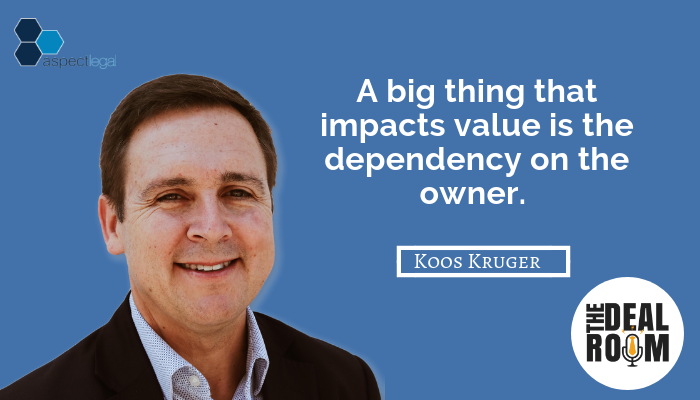
Moving factors to consider in this approach
Joanna: Yeah. I presume that there’s a number of moving factors in consideration of this approach in that if the business has come through a recent history of a strong growth trajectory then of course that can make it a good time to sell when there’s been good solid growth over a period of time and when a business flat lines for a while of course that can impact multiples. But by the same token presumably having a CEO on board that will carry forward to the new owners I presume must be an offsetting factor in terms of contributing well to the multiple that you should be looking at.
I guess it must be a matter of sitting down and balancing with a real understanding of value in the market and pricing in the market at that point what impact this will have in the long term on the valuation of the business as a whole.
Koos: Exactly. Because yes, you might not sell off right away. But at the same time, there will be a point in the future. I mean a big thing that impacts value is the dependency on the owner. So this removes that dependency on the owner because you’re actually saying I’ve got something here that can run by itself.
The other comment around that is that depending on the type of general manager you’re bringing on board. You also can implement a structure where the CEO comes on and says “Look, I’m happy to buy in over the next five years to the point where I’ll basically own 100 percent of the business.”
Joanna: Wow.
Koos: So I can’t buy that business right now because of the way the business is performing and call it my share that I’ll get out of the dividend, my performance bonus, I will reinvest that in acquiring shares from the owner.
It could be a delayed sale where the purchaser is paid a salary to start off with. But eventually will become the older and buy out the owner. You don’t have to then wait for a third party transaction further down the track.
Joanna: These are some really great considerations. As we led into this discussion, one of the things you mentioned was of course the link to all of these considerations together with the remuneration model of an advisor that’s working on the business and it’s obviously a really relevant consideration.
Remuneration model within the M&A space
Joanna: I speak to a lot of brokers and a lot of M&A advisors who are active. We talk quite often about this concept of the remuneration model because it’s a hard model for someone who is out there broking deals from the perspective of sometimes matters will go on for a long period of time, sometimes years.
When you’re only remunerated at the closing of a deal, then you have A) a lot of risk on the table but B) the remuneration model is almost butting against what you might see as the way to provide the best value to your client as well so creating a real issue there between the way that true value can be provided to a client versus the way that the remuneration is being provided.
But lots of the professionals I speak to, whilst they understand all of these issues, they talk to how difficult it can be to get clients on board and agreeing to a different remuneration model. What’s your thoughts on that? And how do you get clients across the line?
Koos: We don’t follow the percentage commission model, and the way I explain it to clients is to say that to me I want to be able to carry your interests at heart. Our philosophy is owner first, business is merely an asset.
If I follow the other model, it becomes business first. Yes, I’ll get you some money out on the way through. So I do go, if a business owner cannot grasp that concept that I cannot be paid where all my alignment is I’ve just got to get rid of this thing because the quicker I get rid of it and even if I get rid of it a little bit less than what you could get for it.
If you look at small medium sized businesses, spending another 6 months to 12 months to get an extra three four five hundred thousand dollars is sometimes not worth the effort because if I’ve got something now, that I can get rid of this thing now. Or am I going to spend another twelve months for getting something that I might get five percent for. It’s like I’ll just get rid of it now.
These same arguments are arguments I have with business owners. That’s why I don’t follow that model and I use that example of the client who could have sold and once we actually looked at it, it wasn’t the right thing for them. If someone comes and goes “Here’s my business. Just get rid of it for me.” We actually say to them “Thank you, but that’s not our model and we unfortunately can’t help you.”
Joanna: Wow! That’s a really strong approach. I know lots of people where that would be one step too far in terms of their business. That’s interesting.
So you say “This is our model and if you just want that quick transaction on commission…
Koos: Don’t come to us. To me, it’s all about the person. This thing called the business is just an asset. It could be another second hand car. It could be another house. That’s all it is. It’s not a first born child. It’s none of those. It’s merely a thing to turn something into dollars.
Here’s a person with feelings, emotions and a family around them. How do I best serve that?
If someone goes I don’t want you to be there. I don’t want you to deal with that side. Then I go “We will not throw the values of the firm out the door just to make a buck. We are not the right firm for your approach.”
And I have had that. I’ve had people that call and I explain how we do things and they go “No no no. But aren’t you business brokers?” And I go “Yes, we are brokers. We’re licensed brokers. But that’s not the way we do things. Mate, I can give you a whole list of brokers. But that’s not our model and we would not compromise our model and the way we do things just for making the extra buck.”
You know nothing about it. It’s okay. So you’ve got to go.
Joanna: It sounds to me Koos like you have walked your talk here and you’ve actually done a bit of work on your own purpose. Because you sound to me like you’re very clear about what it is that your role is and your value proposition and what you want to be providing at the end of the day to your clients.
Koos: Well, we’re very clear about why we exist as a firm. It is not what we do but what our purpose as a firm and that’s very much summarized in “We want to ensure that people who own businesses can enjoy life while they own the business and post their ownership of the business.” That’s why we exist. That’s why we help those people with that single purpose in mind. And yes, we do a whole bunch of things and services. But it’s all centered around that.
Coming back to the thing of someone saying “Break that model.” I go I will not break that model because that’s the core of the firm. You do not break the core merely to get an invoice out the door.
Joanna: Yeah. And I have this recollection, please correct me if I’m wrong. But I have this recollection that on your business card you have something that I recall feeling like it was summarizing your purpose on your business card. Is that right? Or am I remembering this entirely wrong?
Koos: No, you’re remembering it a hundred percent correct. At the back of our business card, we don’t have what we do. But we actually have why we do things.
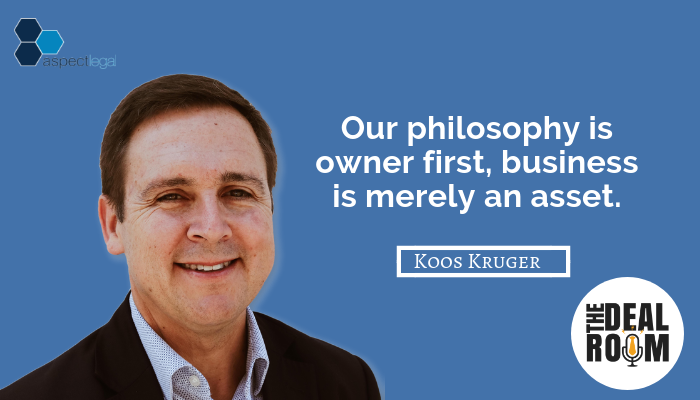
Stick to your purpose and build everything else around that
Joanna: Wow. I think that is incredible and I think that there is something not just for me but for all of our listeners in what you’re talking about today. Whatever perspective they’re coming from, we’ve got quite a diverse audience. But whether you’re an accountant or an advisor or broker or a business owner themselves, the underlying message about getting clear about your purpose in what you’re doing is just as applicable for everyone right?
Koos: For anyone. Know why you’re doing what you’re doing.
And to the business owners listening out, if you can really articulate why you’re doing what you’re doing (not what you are doing), it’s got such an impact on your own staff.
A good example is working with a security firm and I said to the owner “Tell me why have you got this business.” And he went down the path first of saying “Well, we provide security…” and I said “No no no. I know what you do. Tell me why you do it.”.
He actually then unpacked it and said “I wanted to become a fireman. But I realised there’s not much money in that. But I’ve always had this thing of I want to protect people and everything we do is how do we protect people and their assets.”.
I go “Okay. Now let’s work from that perspective.” In his instance, back off “I want to protect people” has now given birth to. The app should be either this week or next week launched and they’re some of the large corporate that’s really going “Ah! I need that app for my business and my people because that’s going to help protect them.”
Joanna: That’s amazing! And what does the app do?
Koos: I don’t know if you know the term lone workers. So people that sort of work for themselves.
Joanna: Yes.
Koos: If something happens to that person, there are notifications that happens so that someone can go and investigate it if something went wrong.
Joanna: Right.
Koos: The genesis of this was sort of an industrial park, and they provided security for the bulk of the park. But there was one business who said “No no no. We’re not going to go with the park security. We’re going to have our own security guy.” And he received a call in the morning saying “We’re so sorry to hear about your guy that passed away last night.” He made all the calls and it wasn’t his guy. It was actually the other guard on the industrial park and what they found out later was that that guy had a stroke. But because he couldn’t get to a phone or anything like that and was only discovered about six or seven hours later. It led to a fatality.
But because this person has got a clear I know my purpose is that of how do I protect people, he went you know what I can do something about that. So I’m now building another business which is all out of that single purpose.
To come back, I can’t stress enough about understand your purpose. Stick to that purpose and the other things will be built around that.
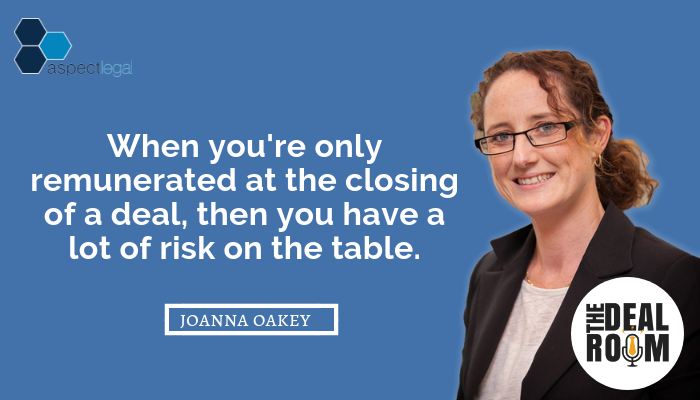
Tips for business brokers and M&A advisors
Joanna: Let’s just talk really practically for some of our listeners who are brokers and accountants. Let’s just start with the brokers and the M&A advisors first, who are probably sitting here with a business model that is built on transaction value commissions and being remunerated mostly or sometimes entirely at completion.
What can we say to them? I mean it’s big to completely reengineer your business model and obviously I think there’s probably (you may not agree) but I think there’s probably room for both different approaches of an approach to exit and business broking. Because some clients like the idea of paying on the basis of success.
Koos: I’m by no means, with the comments that I’ve made, saying that the other model is totally wrong and we’ve just got to all throw it out the window.
As I’ve said, there are certain people who just haven’t done the planning right. I had someone come into my office one day and say to me “I just want to get out of my business because I’m so ill” and that type of thing. The person was 65 at that stage.
Admittedly, they also didn’t have much to sell. But that person just had done no planning, no anything in his life. It’s just I have to see how much I can cash in on this. Therefore, the model of we just got to put it out there. Let’s just try and turn this thing into liquid cash for you. That still has to stay.
Joanna: Yeah.
Koos: There are individuals out there exactly like you say. That just go you could tell me all these things. I hear where you’re coming from, but I believe that if I only pay you when you’re successful then you are going to be successful.
I think there’s room in the market for everyone. But saying that, it does make it a hard model to work with because if you’re only going to be paid six to 12 months down the track, there’s a lot of time that goes into it prior to the cash out.
Joanna: And maybe part of the consideration for some of these brokers who are listening in is firstly having the discussions that help to evaluate whether or not the timing is right for a client as they’re coming to them for a sale, having the network of people like you for example Koos, who you can work with businesses over a period of time to get them into the right sale-ready state if that’s not something that they offer as value add.
But I guess it’s really just about having the understanding and then asking the right questions along the way as part of their process.
Koos: Yeah. And I’m sure that there’ll be many business brokers if we could have run a poll that would have gone “I’ve had the right transaction. I’ve had a very willing buyer and my transaction fell over because the owner pulled out just when we were to sign the sales contract.” That’s that emotional readiness.
Joanna: I absolutely agree with that because I’ve seen that happen. Sometimes it’s not as dire as completely pulling the pin. But not being able to get over road humps along the way and allowing themselves to end up in a position of ending up in loggerheads with the proposed buyer over issues that really are highly surmountable that they feel are insurmountable.
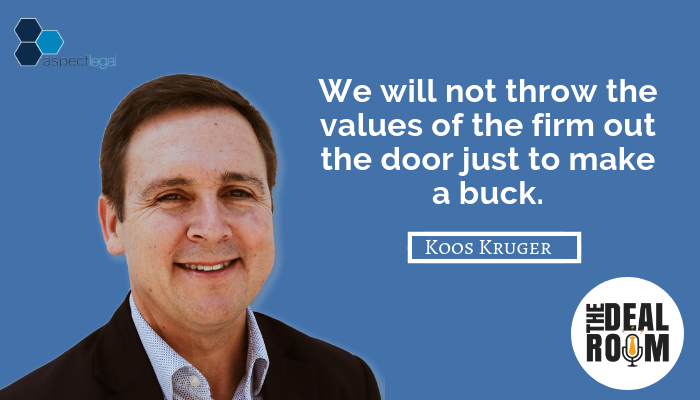
Tips for accountants
Joanna: If we’re flipping now to talking to our accountants who are listening in. Our discussion actually reminds me of a discussion that I had with an accountant recently who talked to me about their approach with clients. They talk about starting off the approach with clients as starting with the end in mind as it were. As we’ve been discussing, talking to the owners about what their retirement looks like, right in the beginning when they’re looking at getting a business client.
When many accountants will sit down with a business plan and say tell me about your business and here’s our estimate and this is what we can do for you blah blah blah. This particular accountant starts with the: what are your plans for retirement? What do you need to live on? How much is your business making you? How much is your business worth now? How much do you need it to be worth at that point of sale so that you can have this lifestyle that you envisage? And doing the whole work back.
I thought that’s a really fabulous perspective, and perhaps maybe a different perspective that advisors as a whole could really take to think about how they approach their clients.
Koos: It comes back to that thing of who do you put in the center. I’ve got this model where I go the nucleus (if you can imagine call it an atom or something like that). But the core of a business is the owner. That owner has got a risk perspective, so they either take certain risks or they’re risk averse or they are willing to take stock or they mitigate some risk. But that’s their risk profile which surrounds the owner and the result of the energy of the owner being the nucleus and their surrounding risk profile delivers at the end of the day the financial reward.
Being an accountant myself who for many years have worked as an accountant, I always approached it from hang on let me start at the outside which is the financial stuff. That’s the easy stuff. It’s printed on a piece of paper. It’s easy to deal with. You delve in a little bit deeper, which is let me talk about risks with this person.
Where I would go, and it sounds like that’s the approach your accountant has got as well, is saying let me talk about you. We will then talk about, if that’s you, what does the risk look like? How much will that end up in a reward?
It’s taking the same model but approaching the model from a different perspective. You start from the inside out which is the core being the owner, a risk profile around them and financial outcomes as a result of those two. Start from the inside going out, rather than from the outside going in.
I always say to people I sometimes have met with owners two or three times before I go “Can you give me a set of your financial statements?”
Joanna: That’s fascinating.
Koos: Rather than you walk in and you go I’ve got this checklist. Number one can I get a copy of your financial statements?
Joanna: Exactly. You’re exactly right Koos. You’re exactly right.
Koos: That’s the difference between the approaches. And coming back to your accountant, that’s the approach he’s following.
Joanna: Yeah. I thought in this discussion with him, I just recall thinking at the time gosh that’s a really interesting approach that I don’t see a lot of. That’s why that piqued my interest at the time. But it seems to accord with what we’re talking about so it’s the right time to circle back to it and bring it up.
All right. Well look, thank you much for your time today Koos. We have navigated some really interesting areas. I knew when we began that this was going to be a bumper discussion and it sure has been.
Koos: It was great having a chat with you.
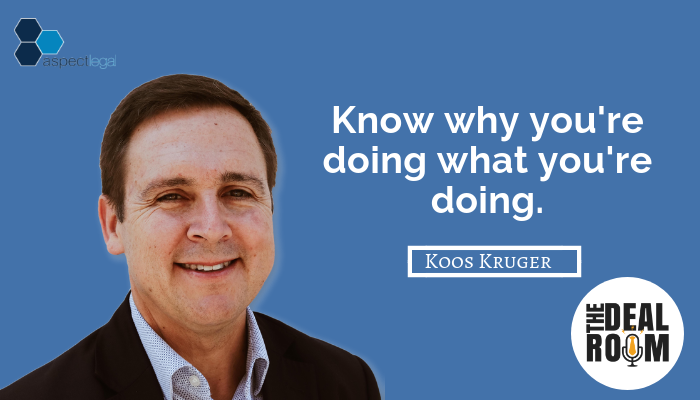
Get in touch with Koos
Joanna: Fabulous. I guess there’s probably a few ways our listeners can interact with you if they’re interested. Firstly, you’ve got a fabulous book “The Business Exit Companion” so I’m guessing if our listeners get in contact with you they might be able to get a copy of that book if it’s something that they are interested in reading.
Koos: Yes. They can contact me via our website which is just businesscompanion.com.au – there’s a Contact Us on there. Even if they would love a sort of a half an hour, I’d sort of bounce some ideas past you. We offer a sort of we call it free consult. You could connect over there and either myself or someone else in the firm would be more than happy to have a conversation with you and bounce ideas around exactly like we’ve done today.
Joanna: Fabulous. Excellent. From our discussion, it seems quite apparent to me that you would be a useful person to talk to for our listeners who are business brokers and who are interested in connecting with someone who might be able to assist their clients or their prospects that they meet if they’re not perhaps perfectly at the point of sale at that time. And indeed perhaps also for our accountants who are listening in who maybe have identified that their clients might need to think about sale in the future but need someone to help them around the clarity of getting their business ready and working out what it looks like for them post sale.
Koos: Yeah. And look, two comments. With the business brokers, even though we hold a broking license, we only do transactions where we’ve identified the potential buyers and we’ll go tap them on the shoulder. So call it strategic sales.
We do sometimes have clients that yes we get them ready. They are now ready to go out into the market and there’s no strategic buyer identified. We would then always refer them to a broker. That’s not what we do.
In relation to accountants, even though I said I’m an accountant by trade, it is something we do not do at all. We, as a firm, have made the decision that we will not provide accounting services so we always partner with accountants in the process rather than say that we can both do each other’s work. Yeah I can complete a tax return but I’m actually not that good at it.
At the same time, I think I’m not too bad with working with owners and the emotional aspects in their life. So maybe let’s play to our strength.
Joanna: I love the honesty Koos! I love it! As I said before, you’re clearly someone who gets his purpose. Fabulous. Well look, I hope this is enjoyable for our listeners as I found them personally. You have yourself a fabulous day and thank you so much once again for joining us on The Deal Room podcast.
Koos: Thank you for having me.
Joanna: And that concludes our two part series with exit advisor Koos Kruger of Business Companion. As a quick recap, today we drilled into a number of moving factors that need to be considered when using the approach that Koos mapped out for us, where the business owner progressively steps away from the business within a five year window by hiring a general manager or CEO to run the day to day of the business during the transition process.
Then we wrapped up the series with some practical tips for our accountants, brokers and business advisors who are assisting small and medium businesses in their business exit planning.
If you’re interested to learn more about this unique approach to business exit, you can reach out to Koos at www.businesscompanion.com.au or check out our show notes at www.thedealroompodcast.com where we’ll link through to their website. There you will also find a full transcript of this podcast episode if you would like to read it in more detail.
I hope you enjoyed what you heard today. If you did, please subscribe to The Deal Room on Apple Podcasts or your other favorite podcast player to get notifications straight to your phones whenever a new episode is out.
Thanks again for listening in! This has been Joanna Oakey and The Deal Room podcast, a podcast proudly brought to you by our commercial legal practice Aspect Legal. See you next time!
Our Business Sales and Acquisitions Services
Aspect Legal has a number of great services that help businesses prepare for a sale or acquisition to help them prepare in advance and to get transaction ready. And we’ve also got a range of services to help guide businesses through the sale and acquisitions process.
We work with clients both big and small and have different types of services depending on size and complexity. We provide a free consultation to discuss your proposed sale or acquisition – so see our show notes on how to book a time to speak with us, or head over to our website at Aspectlegal.com.au
Disclaimer: The material contained on this website is provided for general information purposes only and does not constitute legal advice. You should not depend upon any information appearing on this website without seeking legal advice. We do not guarantee that the contents of this website will be accurate, complete or up-to-date. Liability limited by a scheme approved under Professional Standards Legislation
